![[object Object],[object Object]](https://cdn.sanity.io/images/tsza235h/production/05b477d3a8be5c62bc15607419dca5d067c1e665-1200x800.jpg?rect=0%2C63%2C1200%2C675&w=3840&h=2160&fit=max&auto=format)
Tears of Yakutia
A report from Russia’s diamond capital—a city where luxury is nowhere to be found
In Yakutia, they say: “When God flew over these lands, His hands froze so fiercely that He dropped all His treasures” — referring to diamonds, gold, antimony, tin, oil, coal, gas, and other riches. Sakha truly is a trove of minerals: Vladimir Putin once described its reserves as “planetary in scale.”
The most intensive industrial extraction occurs in the Mirny District, home to gas and oil deposits—and, above all, diamonds. Fourteen percent of the world’s diamond production comes from this region alone. Unsurprisingly, it’s dubbed the “Diamond Land,” while the town of Mirny holds the title of Russia’s "Diamond Capital."
Yet locals often call these very gemstones the “Tears of Yakutia.” The wealth beneath the earth has done little to improve ordinary lives—instead, it’s brought pollution, industrial dust, and the gradual erosion of indigenous lands. Rivers run contaminated, the air thick with mining fumes, and each year, less territory remains for the traditional livelihoods of native communities.
Environmental journalist Anastasia Troyanova and documentary photographer Marina Sycheva traveled to the Mirny District to expose how subterranean riches are slowly destroying the very land they sprung from—the fabled Diamond Land.
The story was produced by Kedr in collaboration with Arсtida.
The Never-Healing Wound
“They named it ‘80 Years of Victory’ and estimated that, if cut into a diamond, it’d be worth 1.2 billion dollars!” a barista at Yakutsk Airport tells us upon learning we’re heading to Mirny. She's talking about the gemstone discovered in early May at the Verkhne-Munskoye deposit—owned, like all diamond assets in the republic, by Alrosa. This is Russia's largest gem-quality diamond ever mined, weighing a staggering 93 grams.
A few days later, we'd learn a bitter irony: most Yakutia residents, including those who work the diamond mines, have never seen these precious stones in real life. Even Alrosa’s own corporate museum in the city doesn’t display them due to “inadequate security measures.”
We fly the propeller-driven AN-24 aircraft, an endless expanse of taiga—charred by last year’s wildfires, crisscrossed by winding rivers, and dotted with lakes just breaking free from ice—stretches beneath the fuselage. Flights from Yakutsk to the “Diamond Capital” don’t operate daily—just two or three times a week.
The airport is a dome-shaped wooden building. Beyond the parking lot fence, a faded, sun-bleached poster features a woman in traditional Yakut attire: “Welcome to Mirny—the Capital of the Diamond Land.” From here, the town’s main “attraction”—the Mir mine, visible even from space—is just a stone’s throw away.

At first glance, the air seems clean, which makes the locals’ social media complaints about foul odors all the more surprising.
“You didn’t notice because it’s spring,” a local woman later tells us. “In summer, when it’s hot, the stench of hydrogen sulfide hits you the moment you step off the plane—you can barely breathe. In winter, a thick fog settles in, carrying this awful, rotten smell from the pit. Like the breath of wounded earth. And if the wind picks up, it reaches all the way to the city center.”
Head of the republic Aisen Nikolayev gives a simple explanation for the odour haunting Mirny: “It’s a normal chemical reaction when groundwater from the Metegero-Ichersky aquifer interacts with oxygen.” According to the official, the fumes pose no health risks, and Alrosa monitors the mine's condition while conducting air quality tests—all of which allegedly show normal readings. Though for some reason, these test results are not available to the public.
Today, the famous mine bears little resemblance to its glossy online portrayals. Greenish liquid fills nearly half the pit, its walls fracturing under groundwater pressure, slowly creeping outward to consume more land.
The airport and residential areas now sit barely two kilometers from Mir’s gaping maw—a 40-minute walk from downtown.

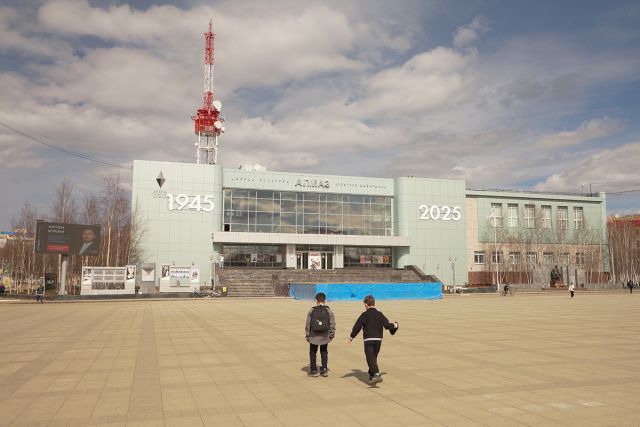
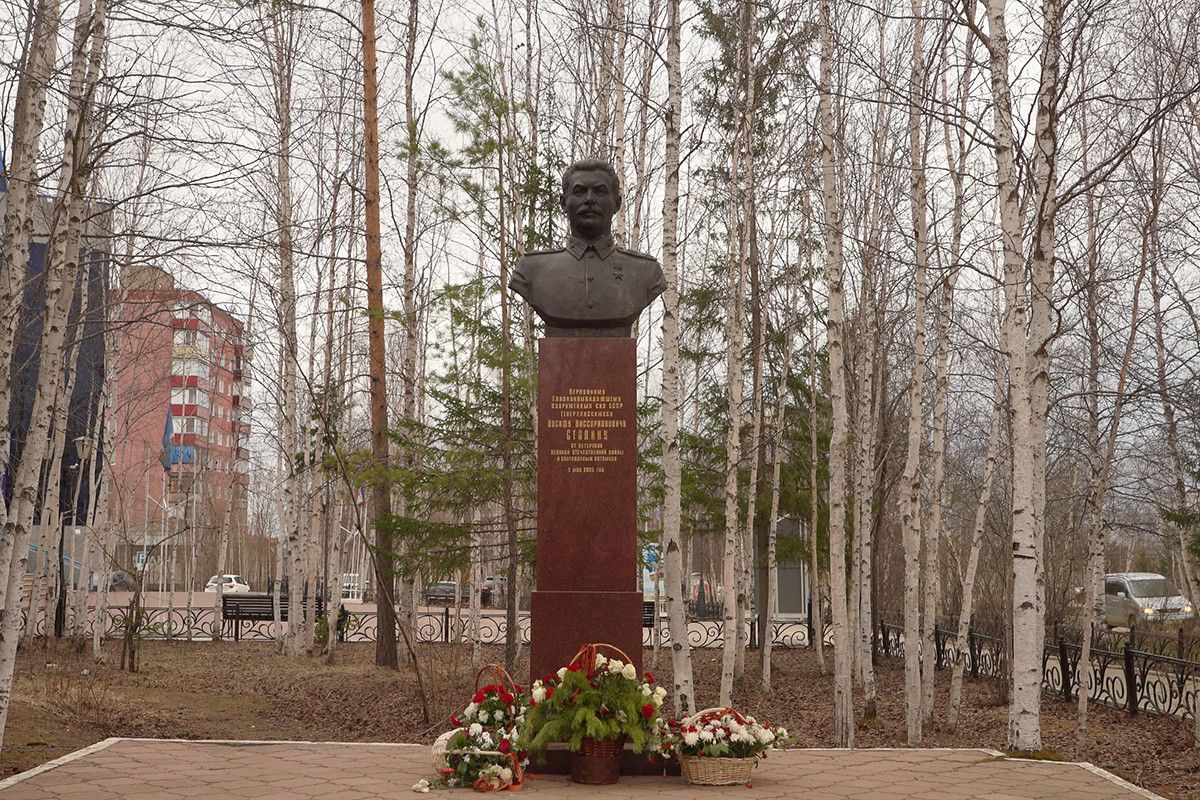
History of the Mir Mine
Yakutia’s first diamond was discovered in 1949 by geologist Grigory Fainstein's team along the Vilyuy River near Krestyakh village, 130 km from Mirny. Recognizing the region’s potential, they continued prospecting. Four years later came Zarnitsa—the first kimberlite pipe deposit, which Alrosa still strip-mines today.
In 1955, geologists Ekaterina Elagina, Yuri Khabardin, and Vladimir Avdeenko discovered a second diamond deposit where Mirny now stands. They sent a coded telegram to their expedition headquarters: “We’ve lit the pipe of peace—excellent tobacco.”
By 1959, Mirny became the first city in Yakutia with nine-story apartment blocks—thousands flocked here, drawn by the diamond rush. Open-pit mining ran from 1957 to 2001 before Alrosa shifted to underground operations. Today, the pit plunges over 520 meters deep, stretching 1.2 kilometers wide.
Underground mining at Mir proved perilous. Collapses in 2012 and 2013 each claimed a life. The worst disaster struck in 2017 when water from the Metegero-Ichersky aquifer flooded the mine, killing eight. A memorial now stands near Alrosa’s headquarters.
Though mining halted after the tragedy, Alrosa plans to revive operations with the Mir-Deep project, targeting an estimated 40+ tons of remaining diamonds. Exploration continues, aiming to expand its reserves to 200 tons.
A makeshift overlook—built on an excavator’s tracks—stands near the pit. Rusty love locks cling to railings, while a plain stone marker lists the years of open-pit mining. Visitors and locals alike hop the low barrier to stare into the abyss.
The liquid filling the pit is referred to as “brine”—though its exact composition remains a mystery, even to locals who follow environmental issues. Only Alrosa or regulatory authorities can collect samples, no independent testing has ever been conducted here.

“Essentially, it's a highly concentrated salt solution that corrodes the pit walls,” explains a Yakutia-based activist who asked to remain anonymous. “If cracks are already visible above the surface, they likely extend below the brine—and there’s no telling how far this fluid could seep into groundwater or spread underground. We don’t know what these salts are—there could be radioactive elements or heavy metals for all we know. The toxicity is completely unstudied. Technically, Rosprirodnadzor [Russia’s environmental watchdog] could test it, but there’s been a moratorium on business inspections for years now, and every company in Mirny District is exploiting that—not just Alrosa.”
The company insists the brine is non-toxic, posing no threat to residents or ecosystems. Yet there is extreme salinity—around 100 grams per liter, compared to the Dead Sea’s 300 grams per liter.
“These waters are confined deep underground within the mine’s sealed space,” Alrosa asserts, “with no contact with surface layers. The permafrost walls act as a natural barrier, preventing any leakage.”
This argument, however, conveniently ignores climate change: rising temperatures, deforestation, and thawing permafrost—already destabilizing landscapes across Yakutia, including Mirny District.

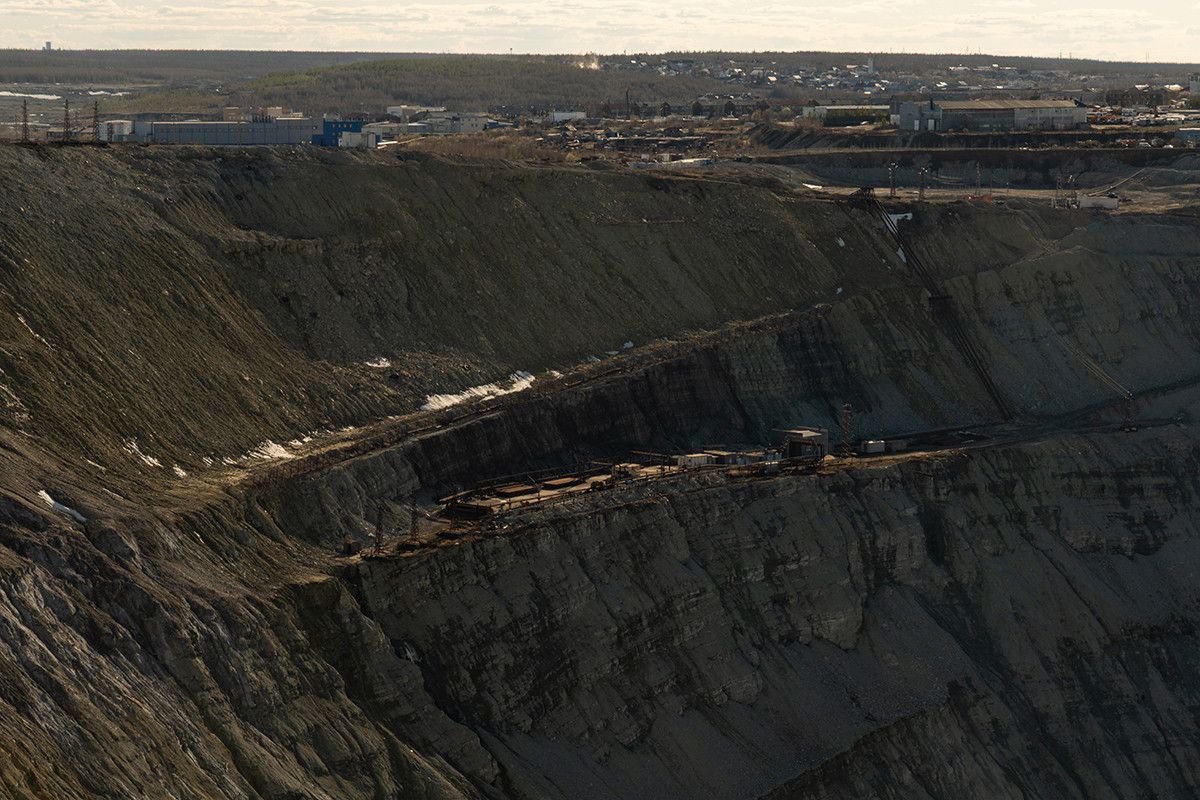
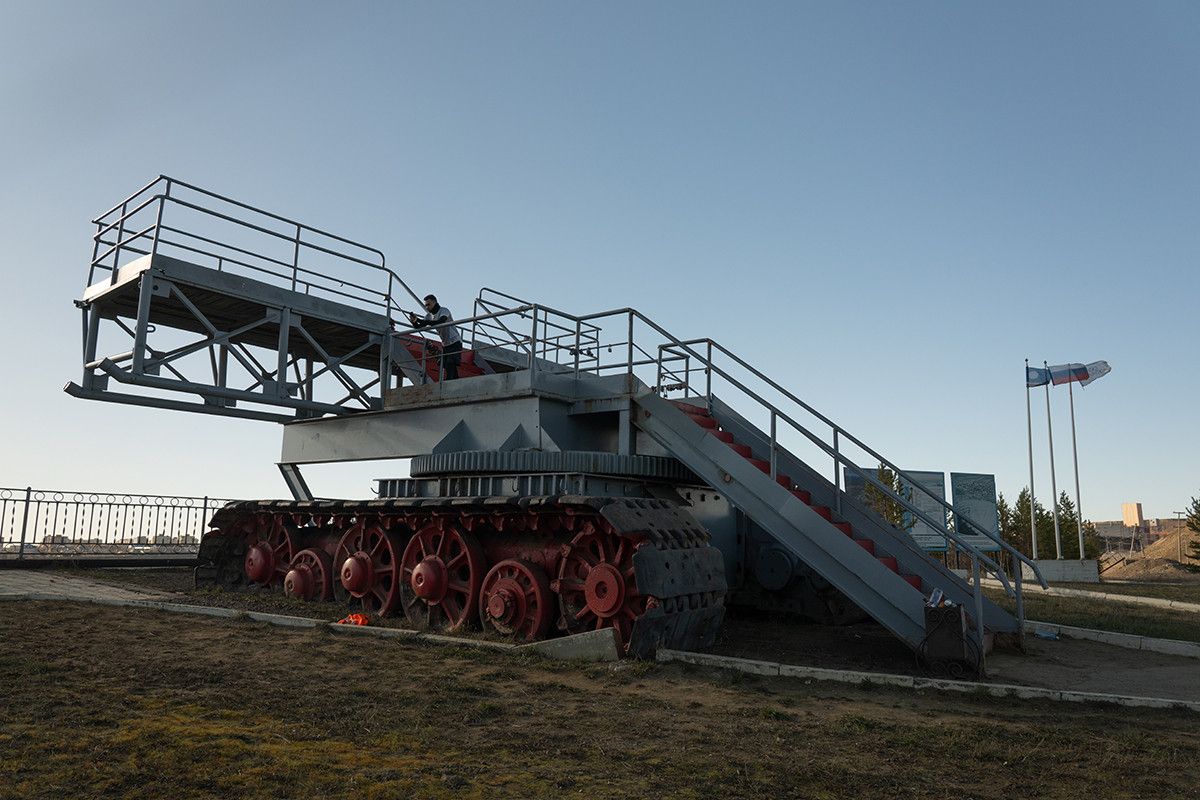
Diamonds in the Dust
Mirny is a city of contradictions—drenched in diamond yet strikingly disconnected from the actual wealth it produces. Everywhere you look, the glittering industry leaves its mark: the Kimberlite sports palace, the 32 Carat dental clinic, the Almaz cultural center, the Crystal grocery store, the Brilliant jewelry shop, even the Diamond Autumn pension fund. The local media outlet, Almazny Krai, blankets the city with billboards—one of which features a quote from Yakutia’s leader: “People whose labor fuels the republic’s and the nation’s economy deserve to live in good conditions.”
In the city park, Alrosa posters boast: “Enough diamonds for 40 more years.” But store prices are equally eye-watering—100 rubles for a loaf of bread, 200 for milk, 1,000 per kilo of cucumbers.
The housing stock is a mix of Soviet-era five- and nine-story apartment blocks on stilts, two-story wooden barracks, and private homes. Locals bristle at the term “barracks,” though, insisting their weathered houses hold warmth better than concrete units during –50°C winters.

To the east, barren gray hills—man-made mounds of overburden waste—rise lifelessly. Uncovered ore trucks rumble through town from the Internatsionalny mine, 15 km away, hauling raw material to Processing Plant No. 3. A fine dust hangs in the air, coating roads, homes, and lungs alike.
“Alrosa leases municipal land to dump this overburden,” says a local activist. “Some ‘experts’ claim it’s safe enough to pave roads with, but I disagree. We have no idea what’s in those piles. I would be better if they’d been removed—the dust blows everywhere.”
Though Alrosa occasionally covers the waste with protective screens, wind rips them away, leaving debris exposed for weeks or months.
Scientists confirm the hazard. A 2019 study noted “consistent exceedances of permissible dust, hydrogen sulfide, carbon monoxide levels” linked to the waste heaps. The same article recommended industrial enterprises rehabilitate waste dumps, but Mirny seems to pay no heed.
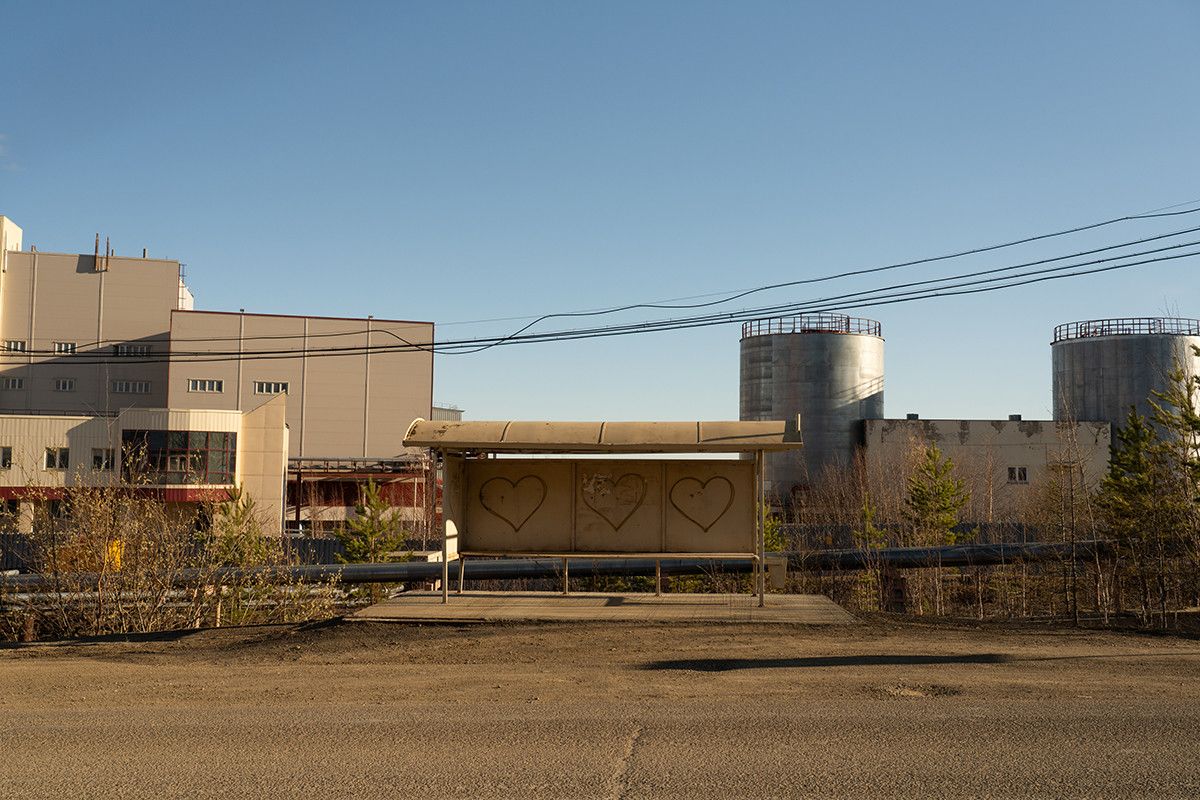
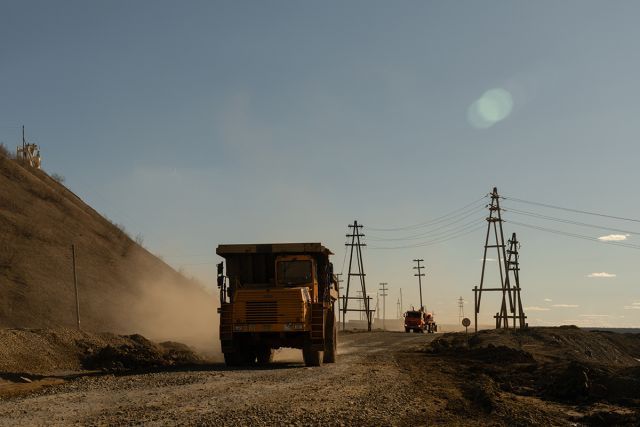
Who Calls the Shots?
At first glance, Mirny District appears firmly under Alrosa’s control—but locals say the company’s dominance is more about image than reality. Other mining corporations that have quietly entrenched themselves here, unlike Alrosa, extract resources without even contributing to local development. Worse yet, Alrosa itself is now scaling back operations—even mothballing its promising Verkhne-Munskoye deposit—amid plummeting global diamond prices.
“The ‘diamond capital’ title is outdated, but people don’t want Alrosa to collapse,” admits the Yakutia-based activist. “It provides jobs—not just in Mirny, but in surrounding villages. Without mining, wages here would be dismal, and you’ve seen the store prices yourselves. Before sanctions, the company paid hefty dividends that actually helped develop the region. The bigger question is where that money really goes—city and district officials are to be asked that.” The activist stresses that Alrosa must prioritize two urgent fixes: the toxic pit and the waste dumps. “Not just on paper—in reality.”
Who controls Alrosa?
Unlike other private or state-owned enterprises operating in Mirny District, Alrosa has a mixed ownership structure:
- 25% owned by the Republic of Sakha (Yakutia)
- 8% owned by Yakutia’s municipal districts (ulus) where the company operates: Anabarsky, Verkhnevilyuysky, Vilyuysky, Lensky, Mirninsky, Nyurbinsky, Olenyoksky and Suntarsky
- 33% owned by the Russian Federation through the Federal Property Management Agency (Rosimushchestvo)
- Remaining shares are in free float held by private individuals and legal entities.
Dividends from the company’s shares flow into the budgets of the republic and districts. Registered in Mirny, Alrosa contributes approximately 75% of all tax payments (including profit tax, mineral extraction tax and personal income tax) to the republic and municipal budgets. As the company itself states: “Every third ruble in Yakutia's budget comes from Alrosa.”
The activist notes that oil and gas companies are now causing more immediate problems for Mirny District than Alrosa. These include:
- Russian Oil and Gas Group (RNG)
- Sulyudkarnaftogaz (both owned by Cyprus-based Eastsib Holding)
- Sakhaneftegas (subsidiary of Irkutsk Oil Company - INK)
- Taas-Yuryakh Oil and Gas Production (subsidiary of Rosneft).
“For instance, last winter, Sakhaneftegas had a pipeline rupture where oil gushed out like a fountain. But citing the moratorium on inspections, they prevented representatives of the local environmental agency from accessing the site. They also wash their oil tankers in the Irelyakh River and refuse to build a dedicated parking area for them. The number of sludge storage facilities in the district keeps growing due to oil companies, and with the permafrost melting, contaminants could leak anywhere in any quantity, and we wouldn’t even know about it,” the activist says.

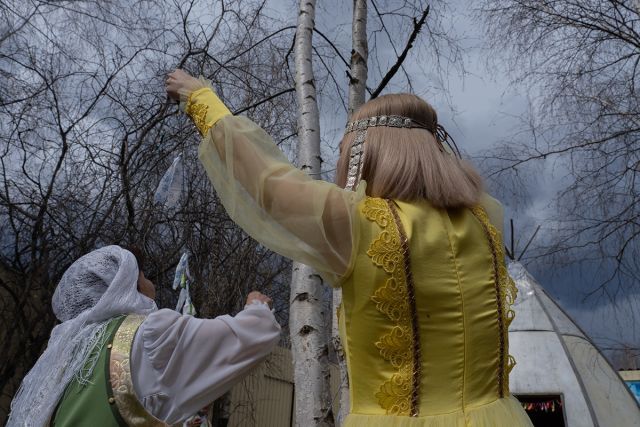
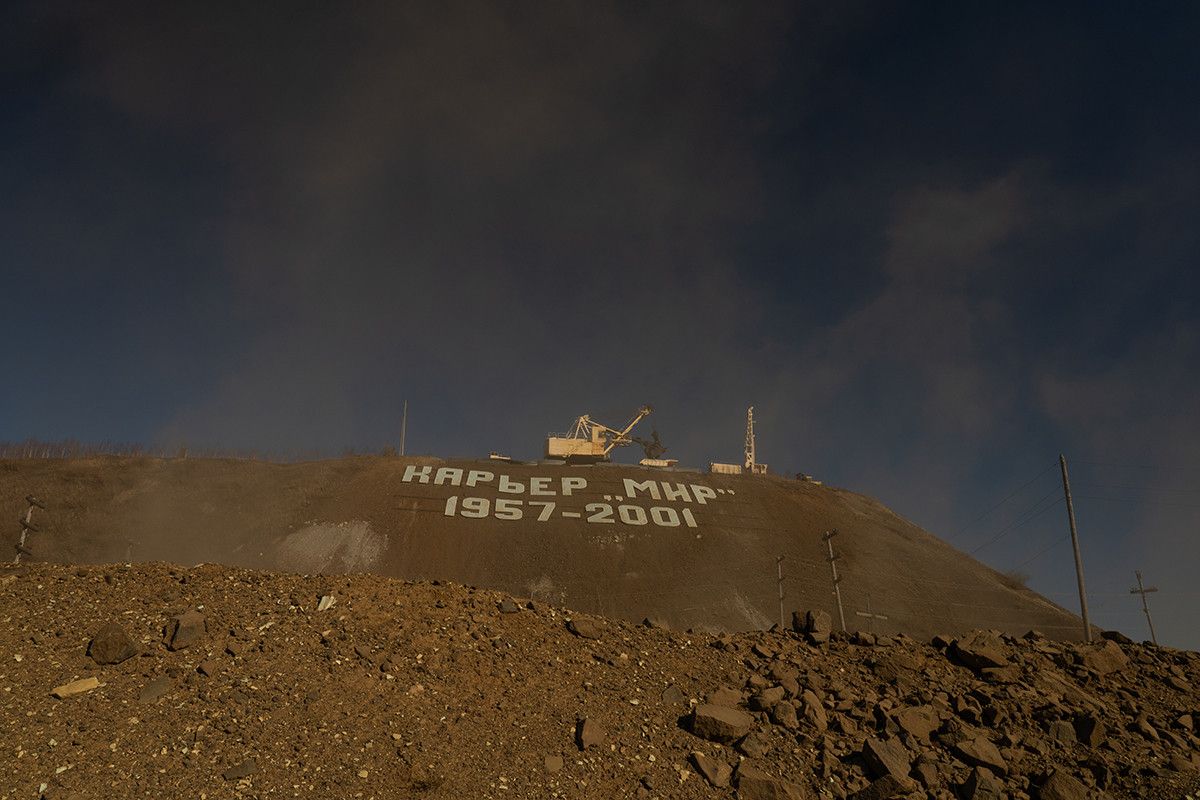
In 2018, a catastrophic failure occurred at Alrosa's Irelakh placer deposit, where four dams burst. More than five million cubic meters of water contaminated with industrial waste flooded into the Irelakh, Malaya Botuobiya, and Vilyuy rivers, eventually reaching the Lena River, Yakutia's primary waterway. Alrosa claimed the incident resulted from “abnormally heavy rainfall and flooding in Yakutia, constituting a natural force majeure rather than any violations in operational practices.” Initially, authorities estimated the damage to water systems at 27 billion rubles, yet after a year of legal proceedings, the company paid only a 30,000 ruble fine.
At the time, Stepan Petrov, head of the now-designated “foreign agent” NGO “Yakutia — Our Opinion,” stated: “For decades, Yakutia's rivers have been poisoned while the population remains silently resigned and authorities turn a blind eye to this outrage. <...> They continue making profits by poisoning rivers and people. This demonstrates that major Russian resource companies operating in Yakutia, including Alrosa, are solely focused on predatory resource extraction and enrichment by any means necessary, in violation of industrial safety standards, environmental regulations, and citizens’ ecological rights.”
The Yakut activist explains the systemic nature of the problem: “All of Yakutia’s rivers are polluted. This began during the Soviet era and is even acknowledged in official reports. Rivers in Mirny District show exceedances of permissible concentrations for multiple substances: chlorides, ammonium ions, calcium, magnesium, copper, zinc, and strontium. Strontium contamination is particularly widespread, found in nearly all water bodies across the district, especially in the Irelakh River, making it unsafe for swimming.
While many locals care about these issues, most are intimidated and fear reprisals.
There’s little employment here outside industrial enterprises, and few indigenous residents remain. Most current residents are either former shift workers who settled here or new temporary workers who couldn’t care less about what happens to the local environment."

A Doorway to the Lower World
By the viewing platform overlooking the Mir mine, we meet a married couple. Today is their last day in town—they are moving to Krasnodar Krai and have come to say goodbye to the pit. Originally from other cities, they came to Mirny as young workers seeking better pay.
“It’s collapsing pretty badly,” the woman says, gesturing at the mine. “I guess it’s not dangerous for the town, but the way it keeps expanding is unsettling. People died here.” She pauses, recalling the 2017 disaster, then adds, “My husband worked in the mines for years. Now we’ve done our time—it’s time to go.”
When asked why Mirny doesn’t resemble Russia’s diamond capital, she says:
“Yeah, we’re no Dubai. People complain—like, billions pass through here, but the town stays, let’s say, humble. We love it anyway, but… people deserve better.”
She believes Mirny is becoming a shift-worker hub, with no real investment in infrastructure expected to be made by the authorities.
Vyacheslav Shadrin, an Elder of the Yukaghir people and deputy director at the Institute for Humanitarian Research and Indigenous Studies of the North (Siberian Branch, Russian Academy of Sciences), explains the broader toll:
“The issue of land reclamation remains unresolved. Industrial companies move into our ancestral lands—where we herd reindeer, hunt, fish—but once they leave, we’re left with poisoned earth and rivers that can never sustain us again. I know we can’t demand restoration from long-defunct companies. But active operators—gold, oil, gas, coal, and yes, Alrosa—must reclaim the lands they abandon.”
For the Indigenous peoples of the North, harming the land has long been considered a sin. Before the arrival of Christianity, their cultures practiced aerial burial (“arangaas” in Yakut tradition)—placing the deceased in wooden coffins high on trees or raised platforms.
Their worldview divides existence into three realms:
- Upper world – home to deities and celestial forces
- Middle world – where humans live
- Lower world – a dark domain of malevolent spirits, associated with the earth’s depths.
“You may question our beliefs,” says Vyacheslav Shadrin, “but most Northern peoples still refuse jobs involving excavation. To us, it remains taboo. Every time I see those kimberlite pipes in Mirny, a chill runs down my spine. Long ago, a shaman told me they’re an open wound on the land—a doorway to the lower world. And as long as it stays open, the Evenki people will suffer.”

Spirit of the Earth
“Diamond land, my ass,” swears Elena, a taxi driver, as we change a punctured tire—a routine hazard on Yakutia’s gravel roads. “They rip so much wealth from this earth—can’t they at least pave the damn roads they drive on?”
We head toward the ferry to Syulyudyukar—its Evenki name means “Spirit of the Earth.” The only Evenki community in Mirny District, it’s accessible in summer solely by boat, and only to those with village residency (checked at the Svetlinskaya Hydroelectric Station on the Vilyuy River).
The journey reveals a scarred landscape: hectares of charred tree skeletons—remnants of wildfires. Fire-wounded taiga is so large that rare patches of new green growth startle against the blackened earth. Bare rock outcroppings appear on some hills along the river.
The Svetlinskaya Hydroelectric Station and the Sacrifice of Tuoy-Khaya
Tuoy-Khaya—a Yakut “Atlantis”—was a village deliberately flooded during the construction of the Svetlinskaya Hydroelectric Station. Built to power diamond mining operations, the station is now owned by Alrosa. Residents of Tuoy-Khaya were forcibly relocated to the villages of Arylah, Syulyudyukar, and Tas-Yuryakh.
“When summer fires pass through, by autumn or the next year, you'll see RNG or Alrosa geologists scouting these areas—it's an open secret,” says an electrician repairing power lines in Syulyudyukar.

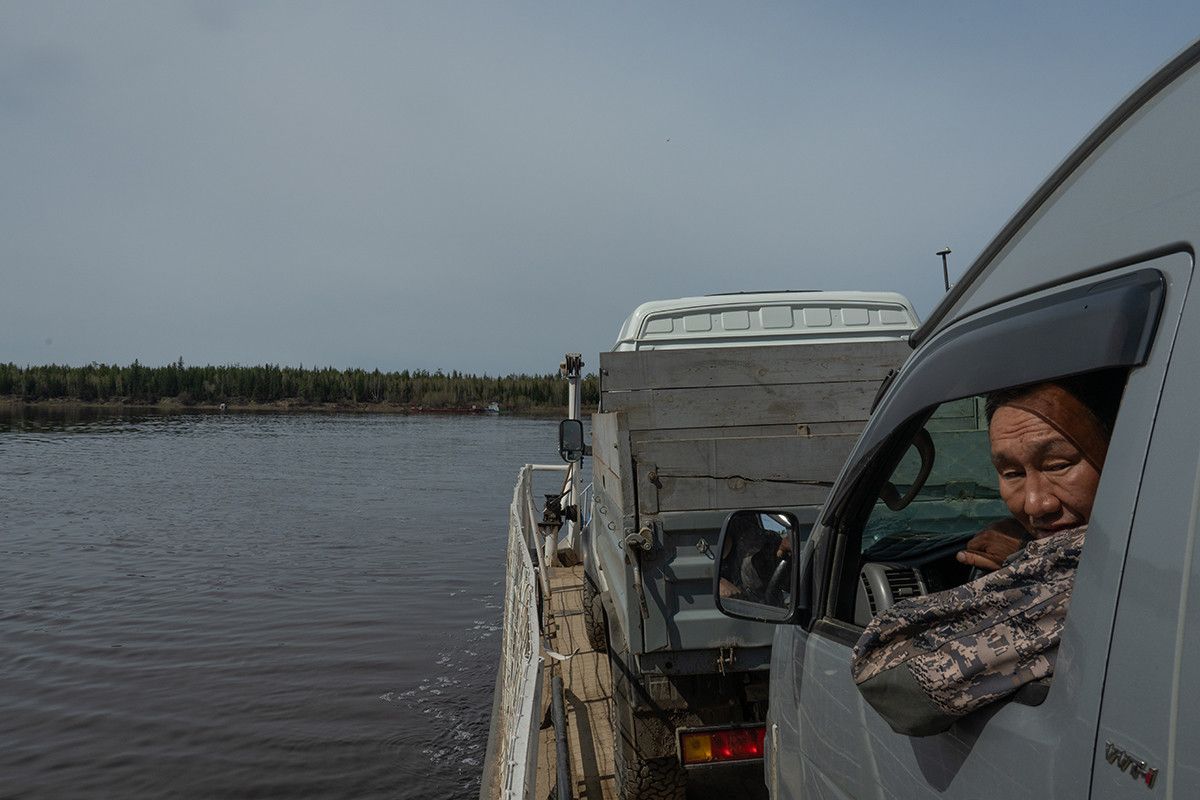
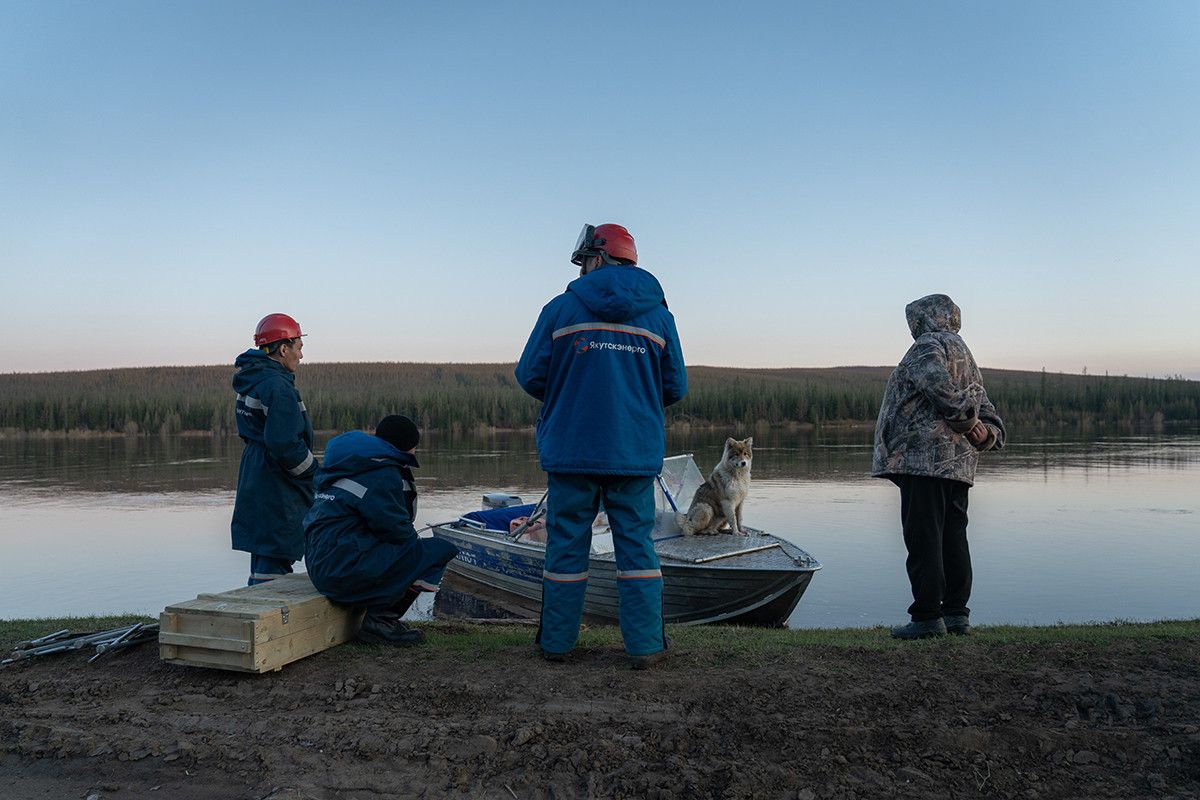
Nearly every resident we spoke to in Syulyudyukar claimed industrial companies deliberately set the fires. Some describe covert arson; others tell of hunters finding exploration teams working in freshly burned taiga. For Syulyudyukar's people—whose village is literally surrounded by oil, gas and diamond deposits—this has become routine. Many feel trapped in a “tightening noose” of extraction companies encroaching from all sides.
Syulyudyukar—the closest settlement to the hydroelectric station—still suffers from erratic power supply. Voltage fluctuates between 160-180 volts (instead of the paid-for 220), lights flicker unpredictably, and electric stoves take noticeably longer to cook meals compared to urban areas. After heavy rains, the village can lose both electricity and mobile service for days—something we witnessed firsthand. During these outages, only those with old wood-burning stoves are lucky enough to prepare hot meals, as Syulyudyukar lacks gas lines or centralized water systems.
The 2018 Alrosa dam collapse remains fresh in local memory—the Vilyuy River turned murky brown, leaving residents without drinking water for over a month. Even a year later, fish caught in the river had ulcers and blackened livers.

Today, authorities still pump drinking water directly from the Vilyuy—running it through cleaning facilities before distributing it to villagers, who must collect it themselves.
“Many just take water from the river, boil it, and drink,” says Igor Danilov, a Syulyudyukar native and researcher at the Institute for Humanitarian Research and Indigenous Studies. “Some can’t make it to the cleaning station, especially the elderly. Others believe the water’s contaminated anyway—whether from the river or after ‘cleaning’—so they see no point in traveling to a facility that barely functions.”
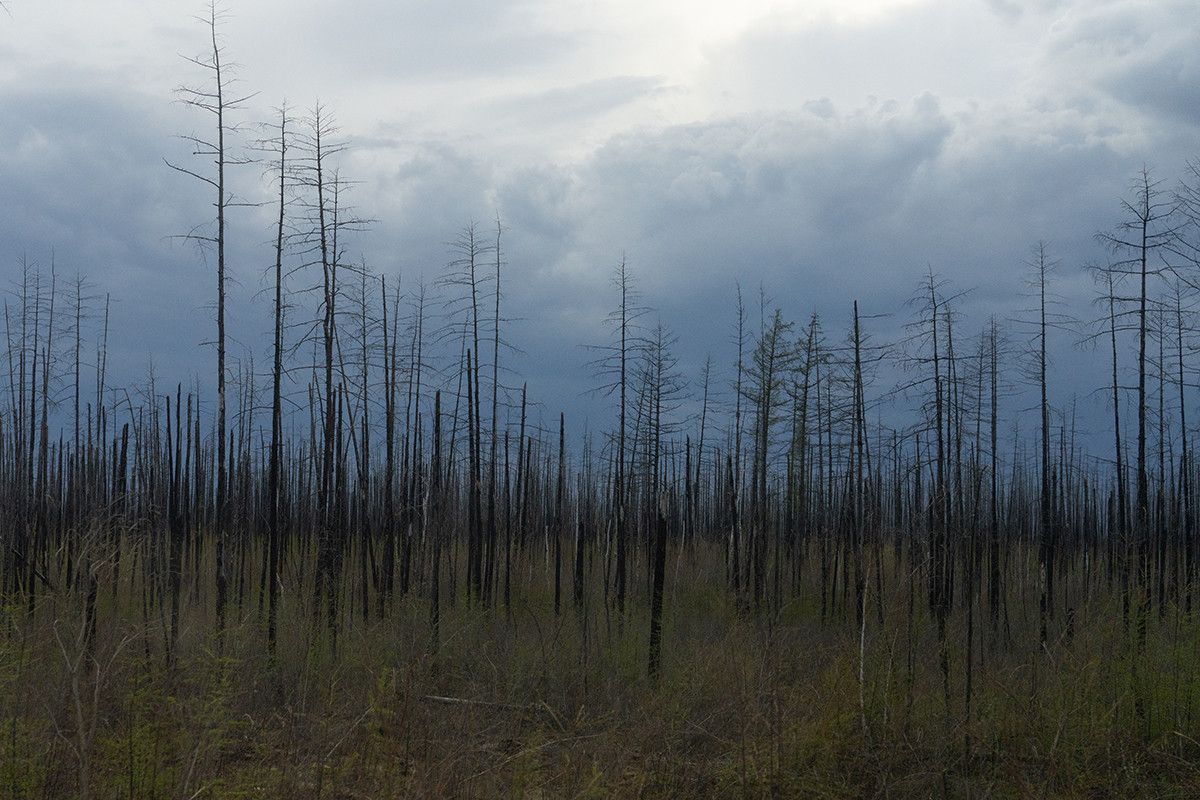
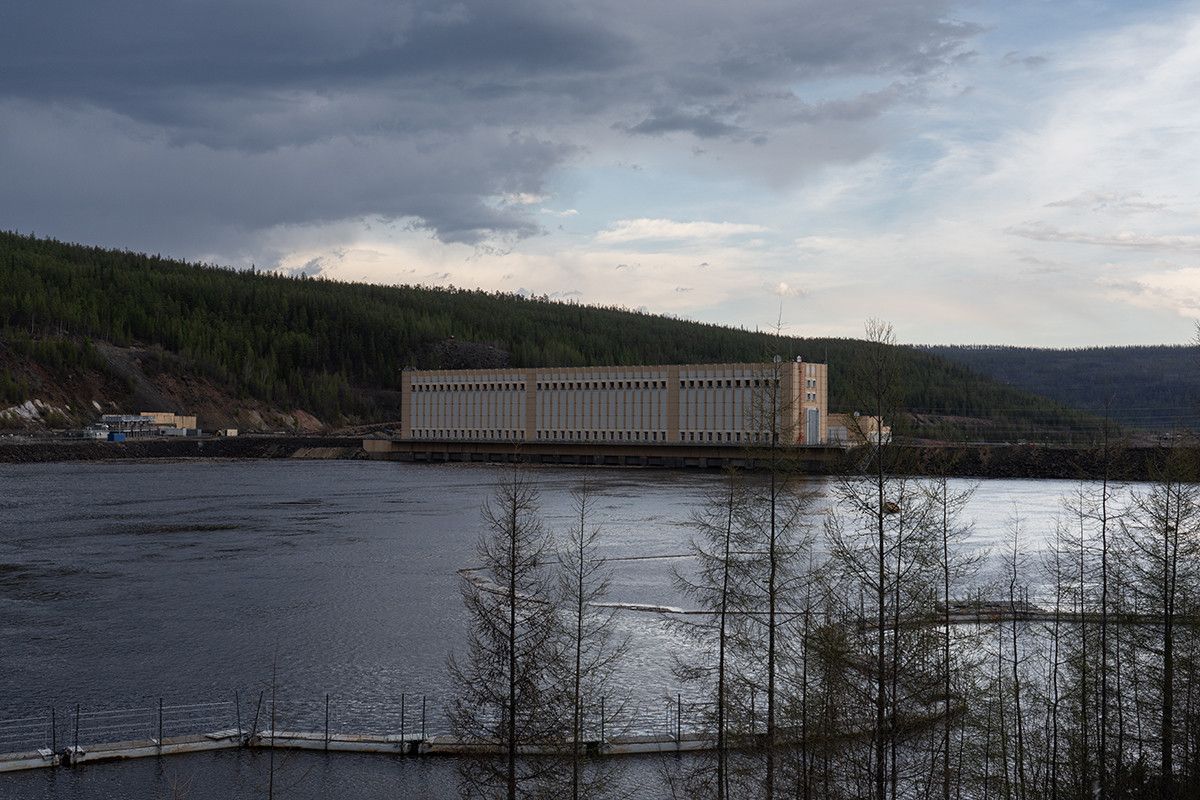
The Sun Stone
“Our ancestors knew there was a 'sun stone' hidden in this land—that’s what they called diamonds. They would find these shiny, transparent pebbles along riverbanks, in creekbeds, even in the crops of birds. But they never imagined it was wealth,” says Anatoly Savvinov, known in Syulyudyukar simply as “Anato” and regarded as a guardian of Evenki culture.
"The Tsarist government knew there were diamonds along the Upper Vilyuy. They searched for them even before the revolution—but only found them sporadically. Our people deliberately avoided revealing their locations for generations. It was forbidden to wound the earth, to make it bleed. Somehow, they sensed disaster would follow.
The first geologists—called “mountain masters” back then—arrived in 1948. Just men with backpacks in that difficult postwar time. And our people helped them—with food, money, reindeer, shelter. We became their guides; they knew nothing of the taiga. This place was a wilderness then—a true desert, in that no other people lived nearby. Then they found the diamonds. Civilization came. Suddenly, there were crowds. Our ancestors thought their children would live in prosperity. But somehow, there was no place left for us. “No extra mouths to feed”—that was the policy. They wanted to be rid of us, the Indigenous people. They drowned our neighbors’ village, Tuoy-Khaya, and left us with this scrap of land—still without a proper road to Syulyudyukar," Savvinov laments, his voice hoarse and trembling.
"Long ago, shamans foretold: if outsiders ever found the sun stone, it would mean the end of us, Evenki. I believe that prophecy has come true. There are so few of us left now. We’ve blended with our Sakha neighbors, lost our language, and worst of all—lost our reindeer herding."

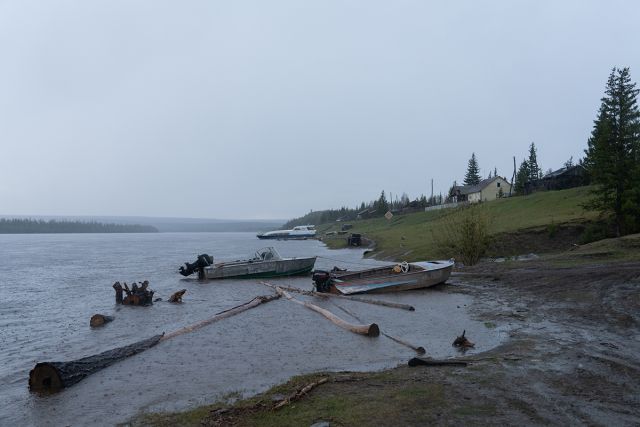
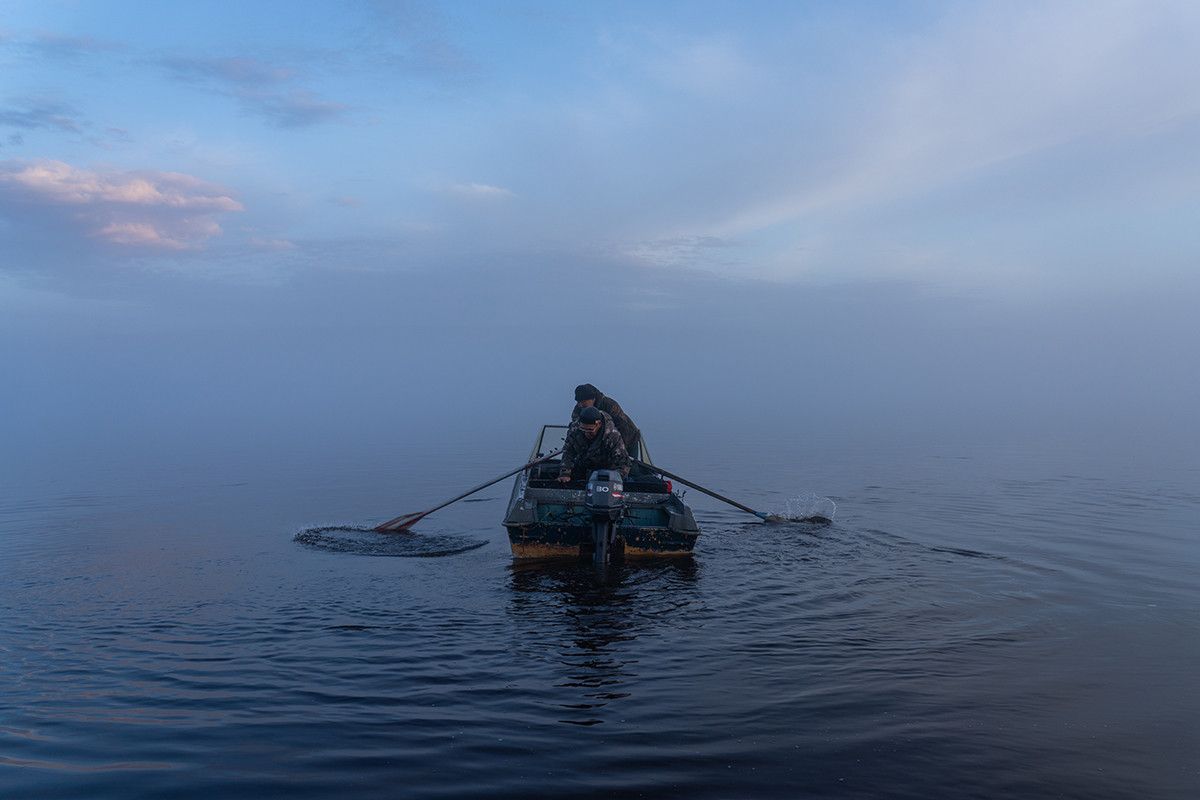
How the Evenki Lost Their Land
No one in Syulyudyukar speaks Evenki—according to researchers, Sakha has replaced it long ago. Reindeer herding vanished, replaced by Yakutian horses and cattle. Families keep ancestral artifacts—sledges, fur clothing—not for revival, in which almost no one here believes, but as relics of a disappearing past.
Igor Danilov, a researcher, notes: “The Evenki’s fractured identity and psychological distress stem not from losing their language, but from losing reindeer herding. Today, the Evenki’s sense of identity is maintained through hunting, fishing, and foraging, but industrial expansion is undermining even these remnants of traditional life. Land is shrinking, resources are dwindling. Hunters from the village say that animals now avoid areas where geological exploration has taken place.”
Vyacheslav Shadrin reflects on the irreversible consequences: “Losing a way of life is easy—restoring it is nearly impossible. Knowledge disappears, daily rhythms change, and the very mentality—the relationship with animals—is shattered. The reindeer was once a family member. For Russian audiences, I compare it to how we treat cats and dogs, honored companions in our homes. Now imagine being told: ‘We’ll breed them by the thousands for meat!’ Of course, your attitude toward them would change. The same happened to Indigenous reindeer herding. In Soviet times, the push for mass production led to herds of tens of thousands. Reindeer lost their role as transport and became purely livestock. Herds of that size never existed before. Yes, they were used for food, but with gratitude and reverence. And when you’re slaughtering thousands daily, rituals for each animal become impossible.”
“The push to settle indigenous peoples also played its part,” Shadrin continues. “Reindeer herding was a way of life practiced by entire families. On the one hand, things improved: houses, stores, schools, medical care, modern conveniences. But it tore families apart. Women and children stayed ‘home,’ while men went into the taiga alone. And that was the beginning of the end. Because a true reindeer herder is someone raised among the animals from infancy, who knows each one by sight.”

“Reindeer herding in Syuldyukar can’t be revived for ecological reasons, too—the animals need vast pastures and forage. But the land near Syuldyukar has been devastated by industry and wildfires, and the territory itself hasn’t belonged to the Evenki people for years. It’s now in the hands of mining companies.”
“The game is gone, the hoofed animals are gone, the fur-bearing animals are gone—there are no more pastures, no more open land,” Anatoly Savvinov shares bitterly. “Our people used to trek 500–600 kilometers to hunt; 100 kilometers was considered nothing. After the wildfires, everything burned to the ground. Lichen takes 50 years to regrow. And when they built the hydroelectric dam, the factories, and mines, they dug everything up. Poisoned water started flowing into the Vilyuy, and then even the fish ceased being as they once were.”
The people of Syuldyukar are also alarmed by the increasing bear activity—the animals now frequently wander into the village and emerge from hibernation earlier than expected. The villagers tie this to geological exploration, as well. The vibrations spread deep into the taiga, even to areas untouched by direct drilling.
“There are several major industrial companies operating in the Sadynsky Nasleg territory,” notes Igor Danilov. “Any one of them could’ve given Syuldyukar reliable electricity, proper water supply, and gas infrastructure. Any one of them could’ve built a year-round road for sure—but none of it happened. I often interview locals for my research, and some see what’s happening as a push to abandon Syuldyukar. Instead of forcibly driving Indigenous people off their ancestral lands, they’re making life so hard that people have no choice but to leave.”
“Everything related to natural resources and mining is decided by the central federal authorities,” explains Vyacheslav Shadrin. “Sometimes even the regions don’t know who’s been granted licenses or where. As Indigenous minorities, we’d like to be part of the decision-making process from the very beginning—to ensure that resource companies take on binding obligations that support sustainable development for native communities.”

Syuldyukar is a tiny, quiet village, hidden from the Vilyuy River by dense coniferous taiga. The only giveaway is a faded, cracked signpost bearing the village’s name, flanked by statues of a reindeer and her calf and an Evenk hunter with his dog. A paper bag with the Rosneft logo and the words “Taas-Yuryakh Oil & Gas Production” dangles from the post’s fence.
Four main streets—it takes barely two hours to walk the whole village. The houses are all wooden, and hunters’ yards display animal hides stretched out to dry. An eight-year-old boy teaches us words in Sakha: kyun (sun), balyk (fish), taba (reindeer), dyie (home). A young hunter named Spiridon, who we interrupted while preparing for a trip into the wild, sings us songs in Evenki and Sakha about nature.
After a heavy, lashing rain, the shore near Syuldyukar is bathed in sunlight, then swallowed by thick milky fog rolling off the Vilyuy. Through it, the silhouettes of boats and fishermen flicker. Well-groomed horses graze peacefully, and the air is filled with the chime of a bell tied to the neck of a Yakutian bull. It brings to mind the somber lines of John Donne: “Ask not for whom the bell tolls—it tolls for thee.”

Cover photo by Marina Sycheva. A former miner of the Mir pit came to see it one last time before leaving.



